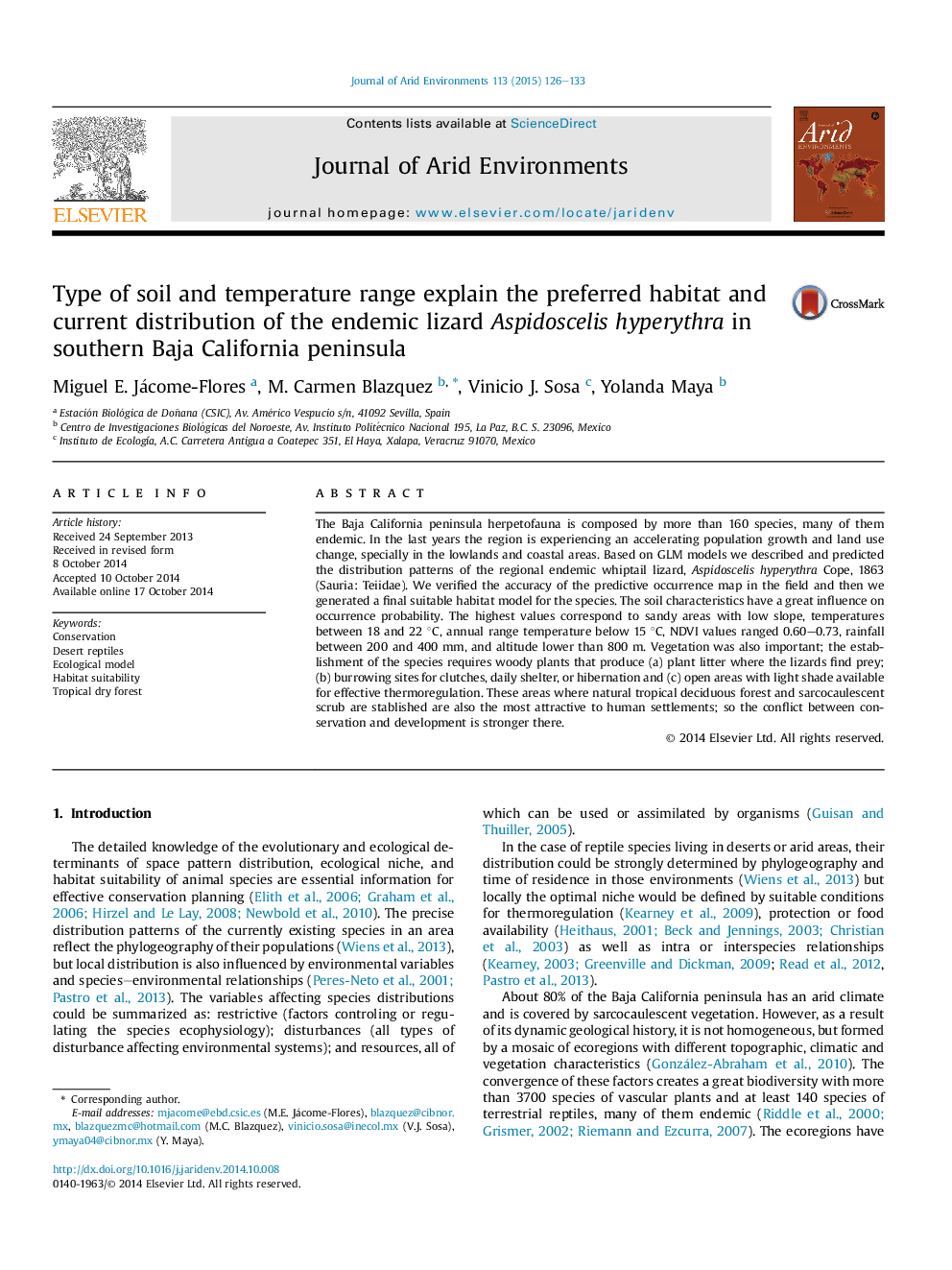| کد مقاله | کد نشریه | سال انتشار | مقاله انگلیسی | نسخه تمام متن |
|---|---|---|---|---|
| 4392879 | 1618246 | 2015 | 8 صفحه PDF | دانلود رایگان |

• We describe and predict the distribution patterns of Aspidoscelis hyperythra lizard (Sauria: Teiidae).
• The species occurred on rainfall between 200 and 400 mm, NDVI between (0.60–0.73).
• Suitable niche characteristics for presence included altitude lower than 800 m.
• Sandy soils and annual range temperature below 15 °C are important in optimal niche.
• Sarcocaulescent vegetation, crasicaulescent scrubs and dry forest are optimal areas.
The Baja California peninsula herpetofauna is composed by more than 160 species, many of them endemic. In the last years the region is experiencing an accelerating population growth and land use change, specially in the lowlands and coastal areas. Based on GLM models we described and predicted the distribution patterns of the regional endemic whiptail lizard, Aspidoscelis hyperythra Cope, 1863 (Sauria: Teiidae). We verified the accuracy of the predictive occurrence map in the field and then we generated a final suitable habitat model for the species. The soil characteristics have a great influence on occurrence probability. The highest values correspond to sandy areas with low slope, temperatures between 18 and 22 °C, annual range temperature below 15 °C, NDVI values ranged 0.60–0.73, rainfall between 200 and 400 mm, and altitude lower than 800 m. Vegetation was also important; the establishment of the species requires woody plants that produce (a) plant litter where the lizards find prey; (b) burrowing sites for clutches, daily shelter, or hibernation and (c) open areas with light shade available for effective thermoregulation. These areas where natural tropical deciduous forest and sarcocaulescent scrub are stablished are also the most attractive to human settlements; so the conflict between conservation and development is stronger there.
Journal: Journal of Arid Environments - Volume 113, February 2015, Pages 126–133